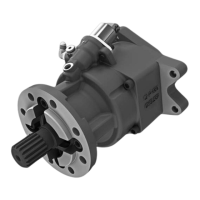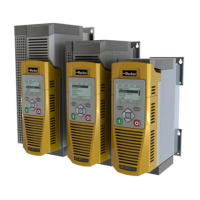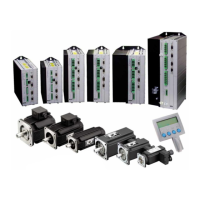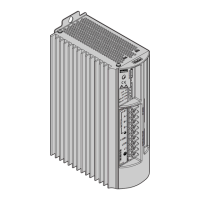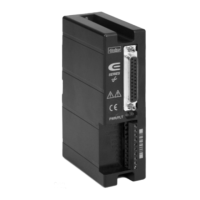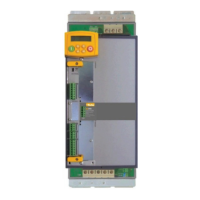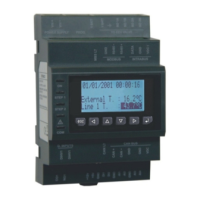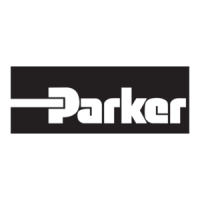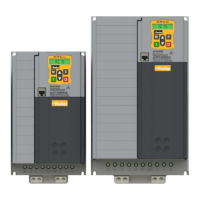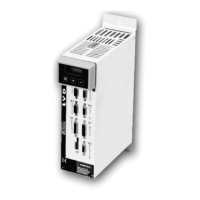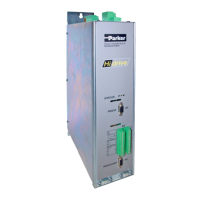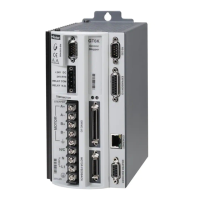5-4 Control Loops
DC590+ Series DC Digital Drive
Tuning Hints
If the P gain (PROP.GAIN) is too high then the response will exhibit a rapid oscillation, that alternates on consecutive current pulses.
If the I gain (INT. GAIN) is too high then the result will be a slower oscillatory response (under-damped), with a period of multiple pulses.
If the I gain (INT. GAIN) is too low then the response will exhibit a long settling tail.
Diagnostics
The diagnostic point for "real" armature current is the first (left-hand side) test point below the calibration panel. This will give 1.1V average for 100%
current. It will also give the operating bridge, i.e. it will be negative for the Master bridge (positive current demand) and positive for the Slave bridge
(negative current demand).
Current Demand Rate Limit (di/dt)
Access to the di/dt limit is currently reserved for Parker SSD Drives personnel only in the Reserved Menu.
This is a limit imposed on the rate of change of the current demand. It is to be used for motors with commutation limitations, mechanical systems that
cannot absorb rapid torque transients and also as a means of limiting current overshoot for large current swings (e.g. 0 à 200%). The default value is set
at 35% (i.e. maximum allowable change is 35% of FLC in 1/6 mains cycle) which has no practical effect on the current response between 0 and 100%.
Speed Loop
The speed loop accepts a demand from either an outside loop (i.e. position loop) or directly from the plant and forms the error signal which is the
difference between demand and feedback. The error signal is fed into a Proportional + Integral compensator which produces the output of the speed
loop, i.e. the current demand signal.
The integral gain is translated into a Time Constant (secs) in the MMI which defines more clearly the function of the compensator against a certain
load time constant.
Speed Loop Synchronised with Current Loop
The proportional part of the P+I algorithm is executed immediately before each run of the current loop, thus ensuring minimum time lag and therefore
maximum bandwidth.
Combined Analog Tacho/Encoder Feedback
By using the analog tacho feedback on the Proportional part of the P + I algorithm and the encoder feedback on the Integral part (using similar
principle as in the current loop), the Drive combines maximum transient response with the increased steady-state accuracy of the digital feedback.
Please refer to Parker SSD Drives Engineering Department for assistance in the use of this feature.
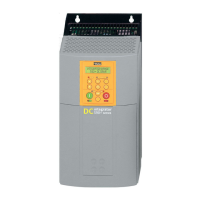
